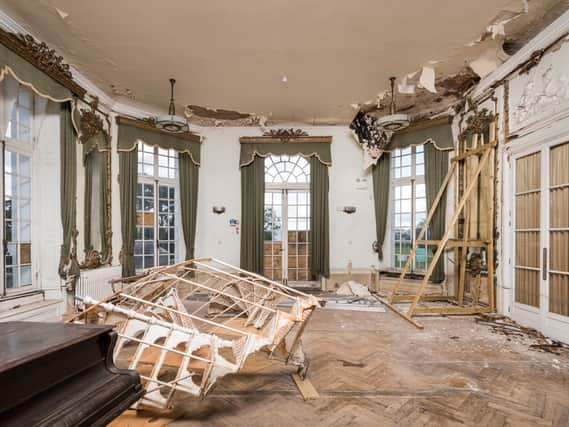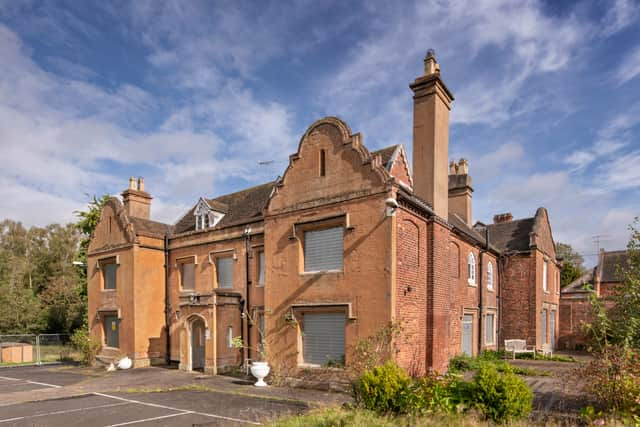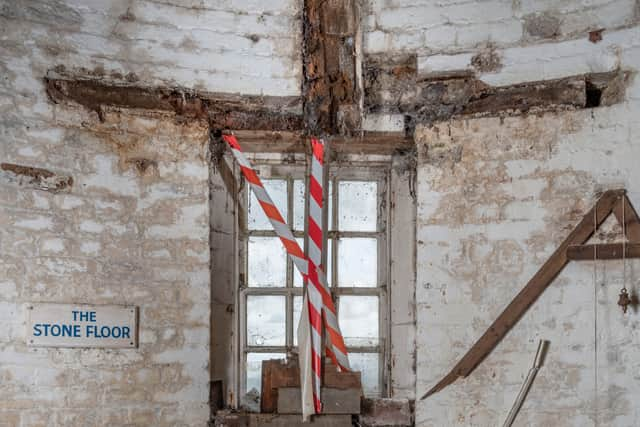Mansions, and the place where Gunpowder Plot unravelled - famous English landmarks that are in a sorry state


A 19th-century millionaire's dream and the place where the Gunpowder Plot unravelled are two of many UK landmarks that have been deemed 'at risk' this year. Historic England's annual 'Heritage at Risk' register has been published and a number of famous buildings have clearly seen better days.
Oldway Mansion in Devon is among 159 buildings added to 2023 list. The stunning building on Torquay Road, Paignton has lost little of its allure from the outside - although it is currently fenced off.
Advertisement
Hide AdAdvertisement
Hide AdMajor repairs are planned for a 19th-century mansion that was the dream home of Isaac Singer, the millionaire founder of the sewing machine company. Built in 1873 to the designs of local architect G S Bridgman, Oldway Mansion was a fashionable French Renaissance-style villa. Its inspiration for remodelling between 1904 and 1907 was the Palace of Versailles.


Its lavishly finished interiors include a ballroom, a hall of mirrors, and a theatre, reflecting Singer’s love of the arts. In 1914 Oldway was converted to a military hospital and treated over 7,000 soldiers before the end of the First World War.
It became council offices in 1945 and remained in use until 2013, when it fell vacant. The building is now in poor condition internally. The roofs and external walls are in urgent need of repair and there are some structural problems.
Torbay Council is developing a programme of repair and conservation that will bring Oldway back into active use.
Advertisement
Hide AdAdvertisement
Hide AdA total of 203 sites have also been rescued and therefore removed from the annually updated list. This year marks 25 years since the list was first published.
Another property on the list is the Grade II*listed Holbeche House in Dudley, West Midlands. This was the property where the Gunpowder Plot unravelled and it now faces an uncertain future.


Built around 1600 and refaced in the early 1800s, the property was protected not just for its architectural importance, it is also listed in part due to its direct association with the Gunpowder Plot.
The building was owned by Stephen Lyttleton – one of Guy Fawkes' co-conspirators who was later executed for his role in the attempted treason. The house was the last refuge of the conspirators after they fled London.
Advertisement
Hide AdAdvertisement
Hide AdFollowing a dramatic last stand, it was where the ringleader Robert Catesby was killed in a gunfight, three days after the plotters failed to blow up the Houses of Parliament. Others involved in the conspiracy were also killed or arrested there.
Having most recently been in use as a care home, the building currently sits empty and is becoming a site of concern for the local community. Historic England is working with Dudley Metropolitan Borough Council to determine the best way the building can be secured and safeguarded for the future.
Polegate is a picturesque brick-tower windmill that is said to be in 'urgent need of restoration'. Located on the edge of the South Downs, it stands four storeys tall and was built in 1817 for milling oats and was operated by wind power until 1942.
Rainwater leaking in from the cap and tower walls is causing damage to the large timber beams on all floors and eroding the mill’s brickwork. The beams, which support the heavy mill stones and internal mechanism, are currently propped. This means there is no public access to the tower.


Advertisement
Hide AdAdvertisement
Hide AdDuncan Wilson, chief executive of Historic England said: “Protecting our heritage is so important. It is truly inspirational to see communities coming together to help save historic buildings and places and find new uses for them.
"The Heritage at Risk programme shines a light on our historic sites most in need and can help to attract funding and help. After a quarter of a century of the Heritage at Risk Register, we are celebrating how many places have been saved and continue to find new ways to involve local people in caring for and enjoying their heritage.” Historic England said there are 48 fewer total entries on the list compared with 2022, and around 6,800 entries have been removed since the list began in 1998.
Arts and Heritage Minister Lord Parkinson of Whitley Bay added: "For a quarter of a century, the Heritage at Risk Register has helped to focus efforts to preserve cherished sites across the country. It is heartening to see that so many sites have had their futures secured and have been taken off the Register over the past year thanks to the hard work of Historic England and local people.
"I look forward to the new additions to the Register receiving similar care and attention so that future generations can continue to enjoy and learn from our rich heritage for years to come."
Comment Guidelines
National World encourages reader discussion on our stories. User feedback, insights and back-and-forth exchanges add a rich layer of context to reporting. Please review our Community Guidelines before commenting.
